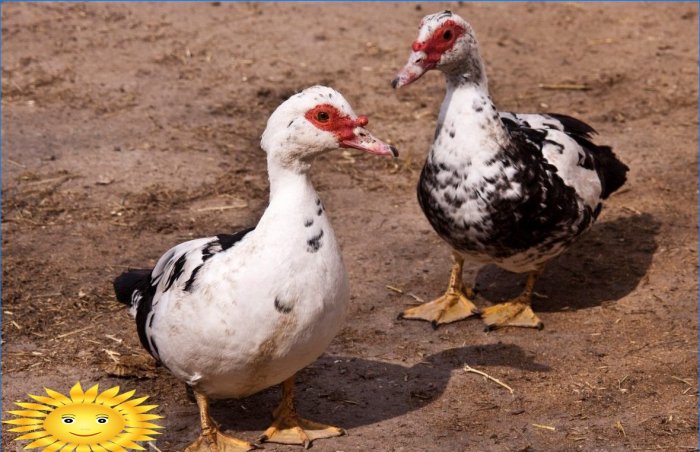
Benefits timeskeeping indoor
To begin with, in order to convince you that breeding Indo-dogs is profitable and quite simple, here are the advantages of these birds:
- unlike ordinary domestic ducks, Indo-ducks have lean, dietary, reddish meat, somewhat similar to game, but not tough;
- birds are picky about food, they are happy to pluck the grass themselves, if you have a place to graze, they can eat waste from the kitchen, for example, peeling carrots and other vegetables;
- duck eggs contain less cholesterol than chicken eggs, they are healthier;
- Indo-ducklings usually reproduce well on their own, no purchase or independent arrangement of an incubator is required, no need to look for and buy ducklings;
- the weight of an adult drake can exceed 6 kilograms, females are smaller, but also quite large;
- cultivation of Indo-Ducks takes 12-13 weeks, that is, after three months it is already possible to slaughter. Several individuals can be kept for breeding purposes;
- Indo-women tolerate frost well, there is no need to heat the place of detention;
- Indo-ducks are quite calm and quiet birds, during their cultivation in the yard there is no such hubbub and cry, as is the case with geese, turkeys or ordinary ducks.
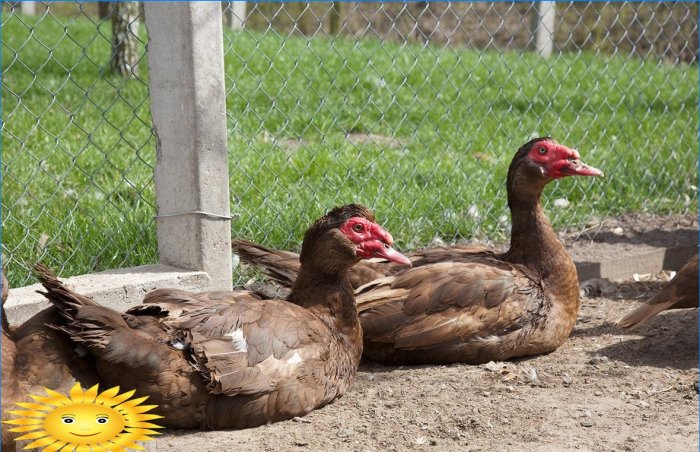
Breedss
Indo-women are divided into domestic and wild. We are, of course, more interested in the first variety, domestic muscovy ducks are larger in size, but wild ones usually run better. Indo-duck breeds differ mainly only in color of plumage: black, white, blue, brown, black and white, white with a pattern.
Note that on many farms, different breeds are often mixed, various color variations are obtained. Separately, we can distinguish such a subspecies as mulardy – a mixture of Peking and musk duck. Mulard are hardy birds with excellent meat productivity, but sterile.
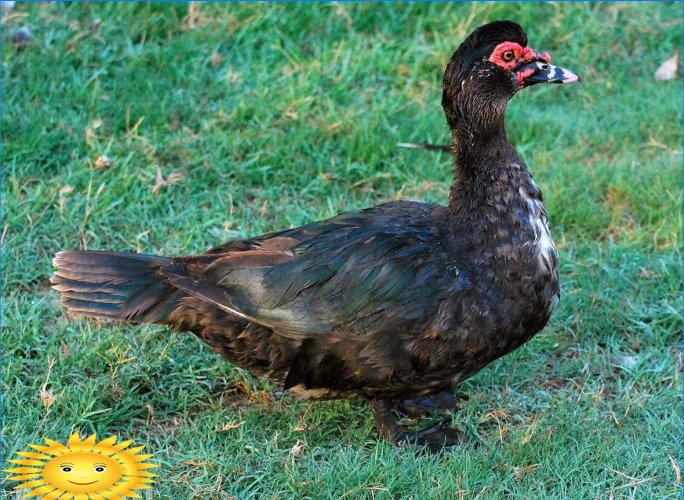
Placednot for content
To start breeding muscovy ducks on your own, you need to leave three or four females and one drake, which will bring offspring. The cost of one Indo-woman, which is bought for the purpose of growing for meat, usually at the end of spring, can vary from 80 to 200 rubles. An adult, for example, an already rushing female, will cost about 1000 rubles.
For growing Indo-ducks, an ordinary, but separate barn is quite suitable, they get along poorly with other birds. In the summer, a simple fence with a canopy is quite enough, the main thing is that the birds are protected from the penetration of dogs, cats, wild predators, rats that can hunt eggs and ducklings.
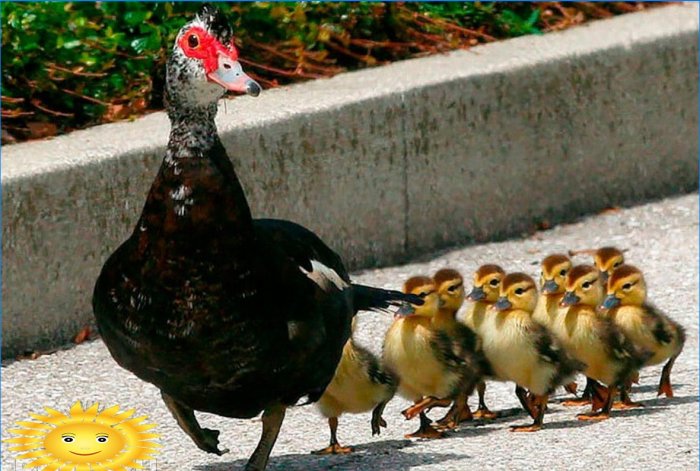
Ideally, Indo-girls have a house-barn where you can spend the night, as well as a place for day walks, because these birds love fresh air and sun. The house should be well ventilated, but free from drafts. Small logs, beams, which are mounted at a height of no more than 40 cm from the floor, are well suited as a perch. Every female needs her own nest if you want healthy and tasty eggs and then ducklings.
As a nest, it is quite possible to use the most ordinary wooden, cardboard or plastic boxes, which are covered with sawdust, burlap or straw. The duck itself will warm the nest with its own fluff when it is going to hatch the ducklings. The nests are placed away from the entrance to the barn, in a shaded, quiet place. You can also build separate houses from planks with a roof and an entrance for a duck.
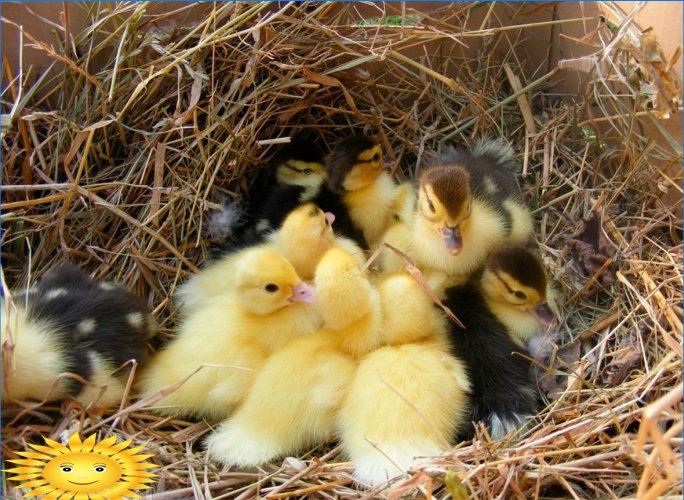
Indo-ducks can also be kept in cages by placing them in tiers and taking care of the slope of the floor so that excrement does not collect under the feet of the bird. However, this method of keeping is used only in cases where there is very little space on the site. It is more difficult to care for the cages, and the duck will not be as comfortable as in relative freedom..
In general, each adult needs approximately 1-1.5 m2 of space.
Important! The weak point of Indo-Ducks is their short legs. They need bedding, preferably non-removable. So it is easier to care for the birds, you do not need to remove the bedding every time, chemical processes will do everything for you, and heat will be released, which is important in winter.
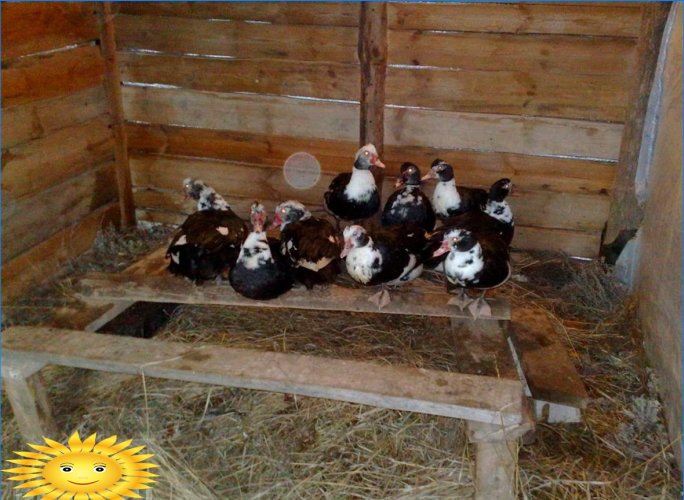
If you bought day old ducklings, at first they should be kept in a box with bedding under an incandescent lamp to provide warmth. After a week, the ducklings will need more space, and from two weeks they can be released to run outside in a fence.
Indo-women reach sexual maturity at six to seven months. If you buy ducklings in the spring, then in the fall, the grown females can begin to lay eggs. The mating season traditionally begins in February, and the laying of eggs begins by April. You can control the process by marking fresh eggs with a marker, setting a date so that they do not overlap – 15-18 days is the optimal time, chicks are best hatched from such eggs.
The female sits down when there are about 20 eggs. The hatching process takes about a month – from 28 to 35 days. The maternal instinct of Indo-girls is very well developed, mothers are caring.
On average, Indo-Ducks bring 80–110 eggs every year, the peak is in autumn and spring, then egg production decreases markedly within three months. The average weight of an Indo-duck egg is 75 g.
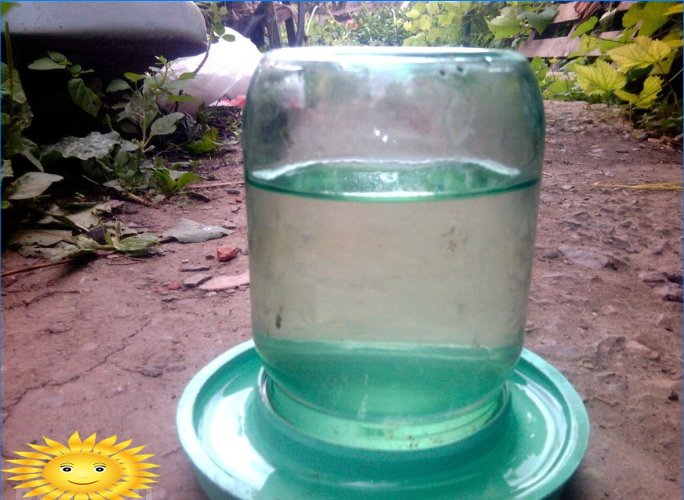
Drinker and feeder
Of course, a drinker and a feeder are required for Indo-Ducks. Unlike other species of ducks and geese, they do not need a reservoir, in winter, on the contrary, it is harmful for them to swim – feathers can freeze and freeze. But they also drink a lot of indocks, therefore, if at the first stage the ducklings have enough vacuum drinking bowl from an ordinary liter jar, turned upside down in any container with low sides, then adult birds need a larger drinking bowl.
In general, literally anything can be used as a feeder and drinker – an old trough or a bowl, preferably small, a trough for dry food made with your own hands from boards. The length of the feeder should be such that all birds can eat at the same time – about 5 cm for each Indoor. There are also special purchased options – for example, a vacuum drinking bowl for 10 liters of water will cost about 400 rubles.
Important! Indo-women do not like dampness, so it is advisable to put the drinker on a pallet, a stand, so that the permanent deep litter does not get wet.

Pitannot
As for nutrition, as we have already said, Indo-girls are unpretentious. In the first days of life, ducklings are given a finely chopped boiled chicken egg. In this case, it is better to pour food on the backs of the ducklings – they see it in motion and try to peck off the crumbs. To accustom them to a drinker is simple – to dip it into the water with a beak. Then you can start adding chopped greens, ground grains, low-fat cottage cheese. There are special compound feeds for Indo-girls, but often the owners decide to raise birds exclusively on their own feed, it is much cheaper.
In the summer, Indo-girls are very willing to peck the grass – in the pasture or from the feeder. But greens alone are not enough for the birds to actively gain weight, so most owners use mash-ups – chopped greens, grated vegetables with ground grain.
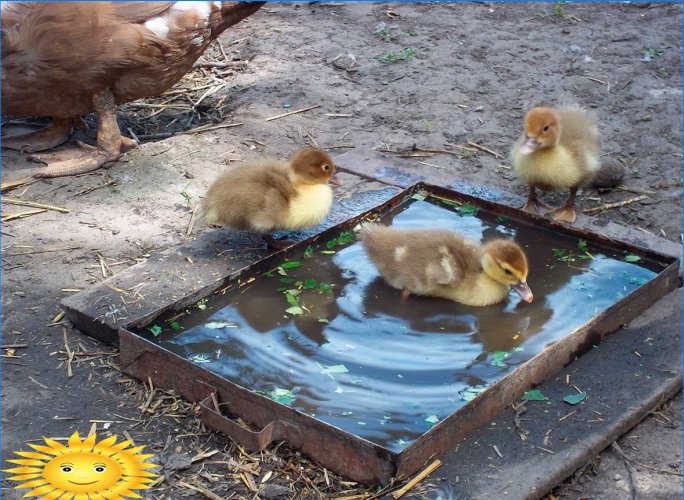
Ducks love duckweed, worms, but you will have to get this food in the nearest reservoir or in the garden. You can add grated zucchini, pumpkin, fodder beets to the bird mash. They love ducks and whole corn kernels, which can be poured separately. Adult birds are usually fed two to three times a day..
The amount of food needed is about 350–400 g per adult and 1 liter of water per day, females eat less. We understand that it is difficult to calculate the exact amount of feed each time, so just pay attention – if the mash and grains remain after feeding, you can give a little less in the evening. If the birds have eaten everything and are busy looking for food in the aviary, increase the portion.
It is very useful to add green onions, bone meal, chalk, shell rock, fish and meat waste, meal or cake to the Indo-duck diet, add a little mash.
Important! Hot and warm food should not be given to Indo-women!
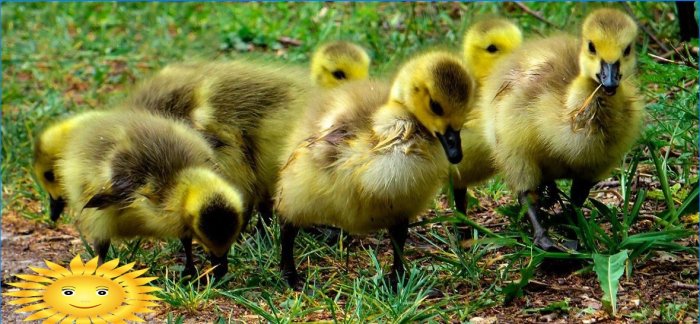
Prophylaxisica diseases
Mass deaths among Indo-women are extremely rare. These birds have strong immunity. If you buy day old ducklings, you can buy an antibiotic from a veterinary pharmacy and give them three days for prevention. Some owners prefer to simply rinse the beak and legs of the ducklings with a solution of potassium permanganate or diluted alcohol for disinfection. Otherwise, if Indo-women have the right diet, in which there are enough vitamins and minerals, farmers do not notice any particular problems. If the ducks began to pluck each other’s feathers, it means that something is missing in the diet..
Important! Adult Indo-girls love to fly, often they have to cut their wings a little, the cuttings should be processed so that the wound heals quickly. Or take care of an aviary with a sufficiently high fence, a roof.
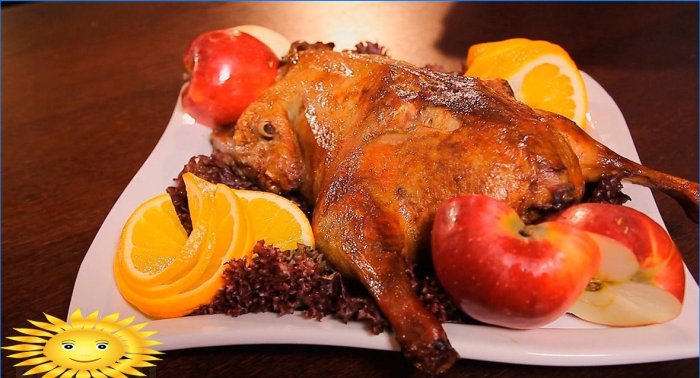
What to do with dietary and delicious Indo-duck meat, we are sure you know yourself! Breeding these unpretentious birds is a profitable occupation, meat is in demand, the growing process is short-lived, and feed costs are not too high..

What are the key aspects to consider when breeding indoor Indo-dogs? How do you ensure their maintenance and care are optimal in an indoor environment?